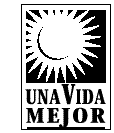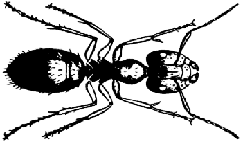
|  |
People become alarmed when they find ants in food or other items in their home. You may have ant problems because food and water are available inside the house. Good housekeeping will keep ants away unless weather conditions are unusually hot and dry or very wet.This will drive the ants to find a new home inside your house.Most ants prefer to nest in soil or wood outdoors, but homes offer many good nesting locations such as wood and cracks or holes in brick veneer sand walls. Ants prefer to be close to heat and moisture.The most effective way to control ants is to find the nest and treat it with an insecticide.
To choose an appropriate control method you must first look at the ant species and the size and place of the infestation. In order to control large infestations you must find the ants' nest or nests. To locate the nests, look for ant trails. The worker ants will usually lead you back to the nest.
Another way to find nests is to use small bait stations to trick the ants into revealing their nest locations. You can use a bottle cap with a little peanut butter, jelly or bacon grease. Watch the ants as they find the food and take some of it back to the nest. This may take some time and effort but you will be able to eliminate the ants quickly and effectively if nests are destroyed.
Use insecticides in dust form indoors because they do not stain, give longer control and can be used around electrical switches or appliances. Apply dusts lightly in thin, even layers in the ant nest area. Always be sure to read and follow label instructions when you use insecticides.
If you cannot find the nest, prepare a small amount of boric acid bait and place 20 to 30 small bait stations where ants have been seen.This will lead you to the nest. (Boric acid can be obtained at most drugstores.) Follow the directions to mix the bait, but do not mix too much boric acid because this reduces its effectiveness. Keep the bait fresh and moist. Be sure not to expose the bait around children or pets; this could be dangerous. If the correct food is used and the bait is kept fresh, you should se results after 3 to 4 weeks of baiting. Commercial ant baits are also available at grocery and hardware stores.
| Directions
to mix bait
To make bait, choose the most attractive food (sweets, grease,fruits or meats) for the ant species that has invaded your home.Mix 1 part boric acid per 50 parts bait food.(example: 1 teaspoon per 1 cup particles or tiny pieces of food.)Keep the bait fresh and moist. |
Routine ant control of the entire area is not recommended unless the lawn is infested with fire ants or ants are continually entering your home.
For more
information about treating your home and lawn for severe infestations,
contact the local county Extension office.
|
Texas
Agricultural Extension Service · The Texas A&M
University System |
Adapted from TAEX publication L-2061 House-InfestingAnts for your use by Ana A. DeLuna, Extension Assistantin Communications. Graphic design by Rhonda R. Kappler.
Una Vida Mejor project activities are supported by a grantfrom the W. K. Kellogg Foundation.
Educational programs conducted by the Texas AgriculturalExtension Service serve people of all ages regardless ofsocioeconomic level, race, color, sex, religion, handicap, ornational origin.
Disclaimer and Reproduction Information: Information in NASD does not represent NIOSH policy. Information included in NASD appears by permission of the author and/or copyright holder. More